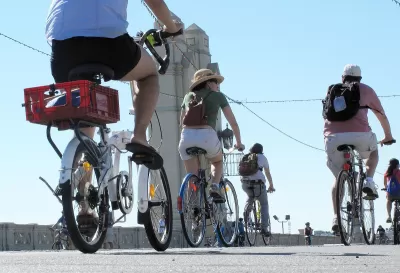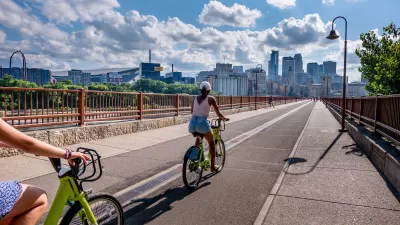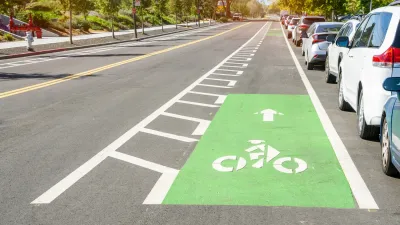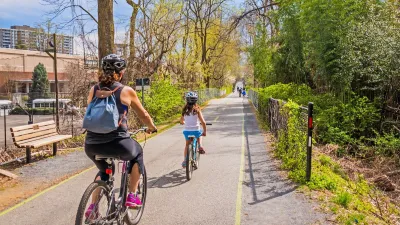Research reveals that, once a city reaches a certain threshold of bike infrastructure, opposition decreases and residents want more.

Has your city entered the ‘virtuous cycle’ of bikeability? Writing in Streetsblog USA, Kea Wilson describes the ‘tipping point’ at which residents begin calling for more bike infrastructure, signaling a desire to see biking as an everyday transportation mode.
The measure comes from advocacy group PeopleForBikes, which issues an annual list of City Ratings. Cities that score 50 or above on the organization’s SPRINT rubric, which “includes such measures as protected bike lanes, safe intersection treatments, and reduced speed limits that are unlikely to kill a cyclist in the event of a crash, among other factors,” are said to have reached the tipping point where “bike culture has firmly taken root.”
According to Martina Haggerty, senior director of local innovation at PeopleForBikes, “[That's] not to say that there aren't still improvements to be made [but it] probably means that more people are riding bikes in those communities because they feel safe and comfortable. And when more people start riding bikes, those people tend to become advocates for better bike infrastructure and for pro-bike policies, which, [in turn,] will get more people riding.”
This year, 183 communities achieved a score of 50 or higher, a dramatic jump from the 33 that reached that score in 2019. This “reveals for the first time just how fast these destinations have improved their biking scores over the years — and how, at a certain point, those wins become self-perpetuating.” However, those communities represent just 8 percent of the 2.300 communities on the list.
FULL STORY: Has Your City Passed the ‘Bikeability Tipping Point’?

Trump Administration Could Effectively End Housing Voucher Program
Federal officials are eyeing major cuts to the Section 8 program that helps millions of low-income households pay rent.

Planetizen Federal Action Tracker
A weekly monitor of how Trump’s orders and actions are impacting planners and planning in America.

Ken Jennings Launches Transit Web Series
The Jeopardy champ wants you to ride public transit.

New Jersey Lawsuit Targets Rent-Setting Algorithms
The state of New Jersey is taking legal action against landlords and companies that engage in what the state’s Attorney General alleges is illegal rent fixing.

Washington Legislature Passes Rent Increase Cap
A bill that caps rent increases at 7 percent plus inflation is headed to the governor’s desk.

From Planning to Action: How LA County Is Rethinking Climate Resilience
Chief Sustainability Officer Rita Kampalath outlines the County’s shift from planning to implementation in its climate resilience efforts, emphasizing cross-departmental coordination, updated recovery strategies, and the need for flexible funding.
Urban Design for Planners 1: Software Tools
This six-course series explores essential urban design concepts using open source software and equips planners with the tools they need to participate fully in the urban design process.
Planning for Universal Design
Learn the tools for implementing Universal Design in planning regulations.
Heyer Gruel & Associates PA
Ada County Highway District
Institute for Housing and Urban Development Studies (IHS)
City of Grandview
Harvard GSD Executive Education
Toledo-Lucas County Plan Commissions
Salt Lake City
NYU Wagner Graduate School of Public Service





























